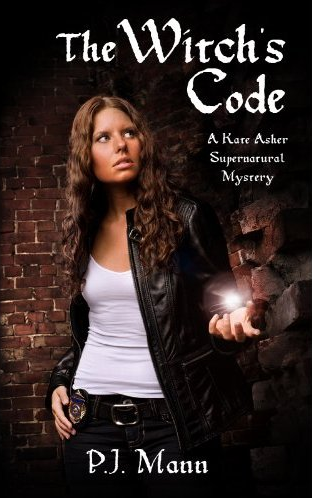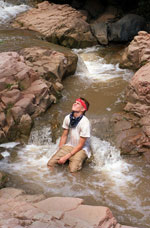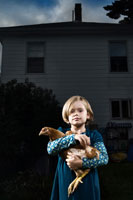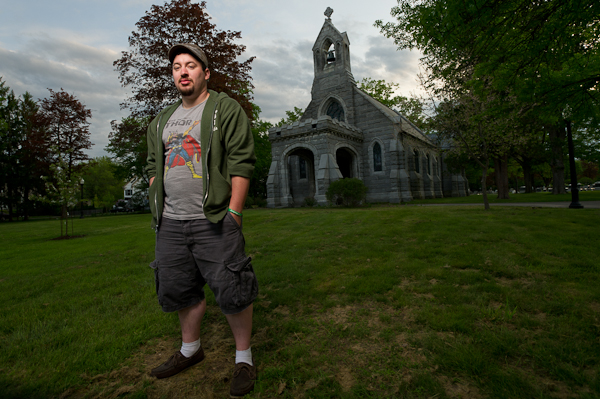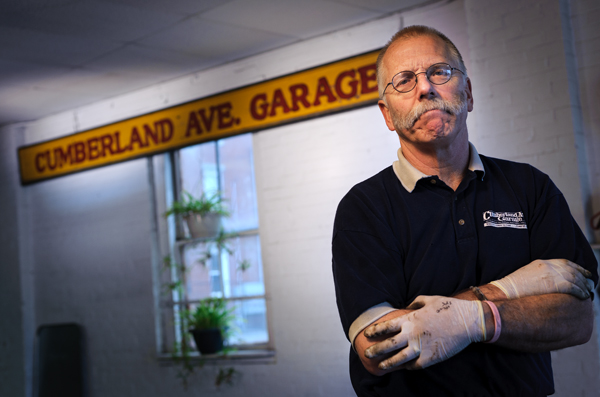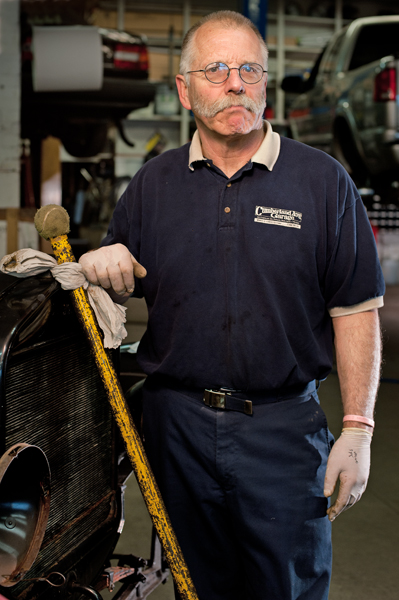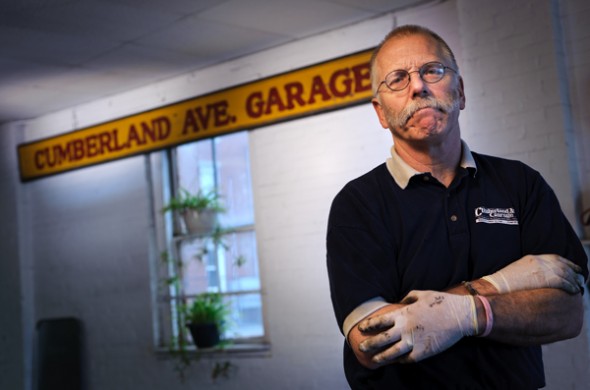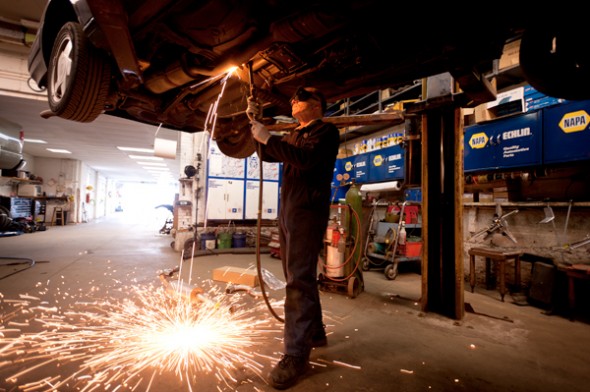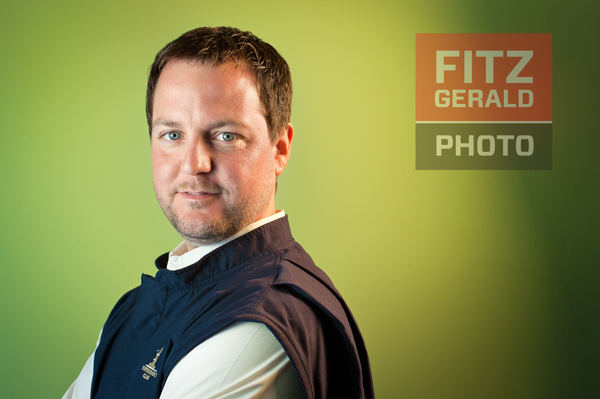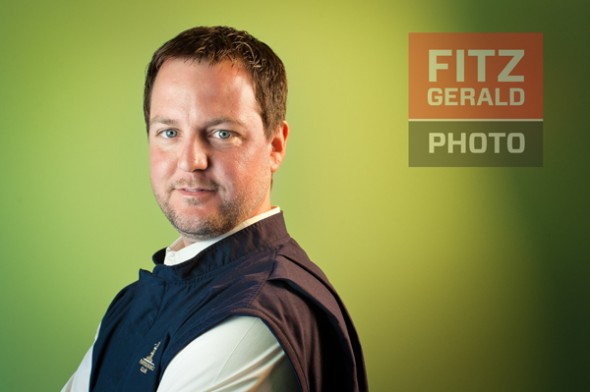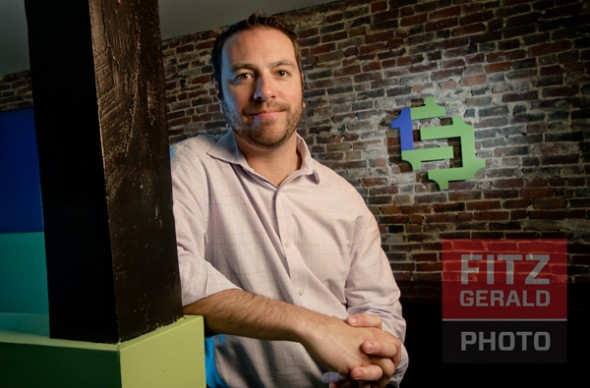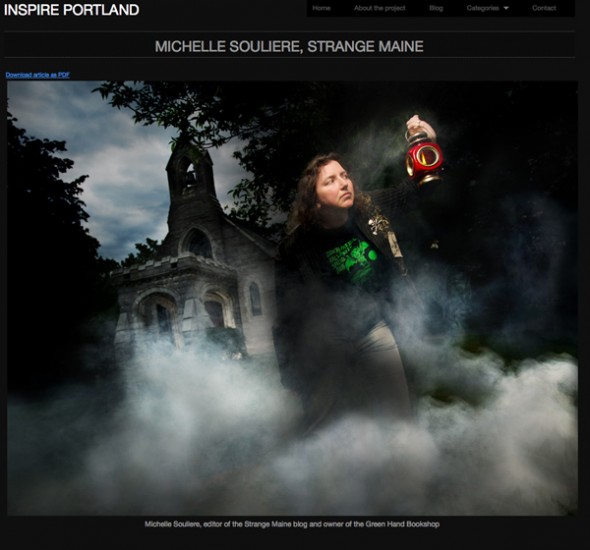
The path to inspiration takes many twists. If any of those dark and windy turns are located in Maine, chances are that Michelle Souliere probably can tell you all about them.
Along with her husband, Tristan, Michelle is force behind the Strange Maine blog. She’s also a writer, having published a book on the subject of strange things Maine last year. She’s a speaker, radio personality, and a business owner, running the Green Hand Bookshop on Congress Street. She’s also an artist with a fine-arts degree from MECA.
Above all Michelle is a Mainer, and she loves to tell people jsut how odd, spooky or downright wierd Maine really is.
I suspect that’s why she made the suggestion of shooting her photo in a cemetery, which I readily accepted. The shoot went well, at Evergreen Cemetery, and I learned a few things. One, take extra batteries. Two, fog is hard to shoot. Three, kerosene lanterns are very messy. So, thanks, Michelle, for being so patient with us during a long shoot with fickle props.
I like the final image chosen—dark, ominous, with Michelle shedding light on the darkness. She was a lot of fun, and has some cool things to say in her interview on the Inspire Portland site. Check it out!

